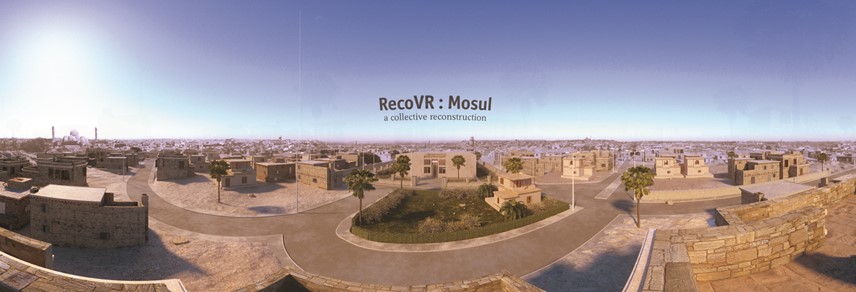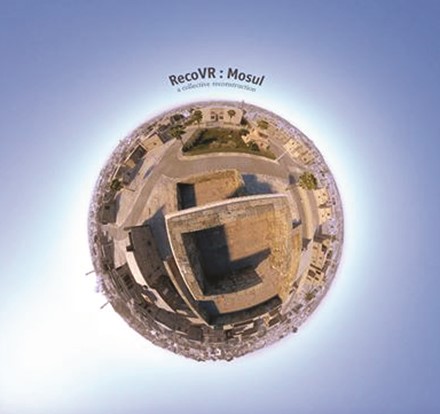
PRESERVING HISTORY IN WAR
Digital communications and groundbreaking technology have helped to preserve Iraq’s cultural heritage while the country is still a battleground. Amy Sandys reports on the Mosul Museum’s new digital offering and a unique way of curating a digital museum

Challenge:
Situated in northern Iraq, the Mosul Museum is the country’s second largest museum. On 26 February 2015, a group of jihadists affiliated with the so-called Islamic State (Isis) entered the museum, destroying priceless historic artefacts across two of the museum’s four antechambers. Isis claimed it was acting in defence of its prophet and decrying the polytheism which leads to the worship of alternative idols. The group also used hammers and other tools to destroy ancient ruins around the city – its actions shocked people in every corner of the world.
It became imperative for strategies to be developed, with which the barbaric destruction carried out by Isis would not mean the loss of cultural history across the Middle East. Yet, with Mosul under Isis control since June 2014, no safe attempt could be made to recover surviving artefacts and secure the city’s heritage against further destruction. A remote collaboration courtesy of crowdsourcing project, Rekrei, and global publication, the Economist, provided the means through which the Mosul Museum’s artefacts could be recreated digitally.
Using software provided by virtual reality studio, Visualise, the RecoVR Mosul project sees destroyed artefacts ‘salvaged’ and the museum made available, via virtual reality, to the Economist’s global audience. The experience is that of a tour, where viewers are guided through replicas of the destroyed objects. A voiceover, provided by the Economist, explains the background behind the RecoVR Mosul project. Frank Andrejasich, product manager and associate director of Economist Media Lab, says the magazine made sure it could reach the widest possible audience through its own platform and through social media channels.
Strategy:
The Mosul Museum used crowdsourced imagery to render the destroyed artefacts into digital format. This had the dual advantage of salvaging important cultural indicators, while exhibiting a Mesopotamian heritage unknown to many. Andrejasich says, “It was an internal conversation within the organisation about how editorially and commercially we can think about VR, and source the stories in an effective medium for the Economist. For the larger VR community, it was to let them know that the Economist is experimenting in the space and looking for new ideas to express journalism.”
Enlisting the input of Visualise provided RecoVR Mosul with a highly original visual platform, the likes of which is generally unseen in journalism. Yet, ensuring the virtual reality reached as wide an audience as possible, while retaining a level of quality, required strategic planning by Visualise. Will McMaster, head of production, says, “We took the assets created from the original experience and did a lot of environmental work on the museum itself. We were then tasked with figuring out how to make the highest quality experience possible, to target the largest number of users.”
For the Economist, ensuring its audience understood the cultural value of the Mosul Museum’s recreated artefacts became as important as the imagery itself. Storytelling was integral to the clarity of RecoVR Mosul, and the effect it has on its audience. Andrejasich says, “It was telling the story first, on the tragic loss
of cultural heritage. Second, the possibilities and limitations as well as the technology to restore some of that lost cultural heritage. It’s also a lot of perspective about being able to bring our audience to places they might not otherwise be able to visit, whether that be distance from the space or because of tragic events.”
Digital is not solely confined to recreating lost heritage, however. Use of social media channels has allowed the organisations involved in the Mosul Museum recreation to relay the important message of Mesopotamia’s history to a global audience. For Andrejasich, the most successful part of this project is the new interest in virtual reality for storytelling. He says, “The [most successful part] has been the ability to reach across all of our social channels to an audience who maybe experiencing virtual reality for the first time.” The technology used in RecoVR Mosul is impressive, but Visualise was also careful to retain the main purpose behind its restoration. This meant replicating the Mosul Museum as carefully as possible, and ensuring the video coincided perfectly with the narrative provided by the Economist.
Results:
When news of the destruction broke, archaeologists in particular decried the destruction of such precious artefacts, actions later replicated across many other Iraqi and Syrian sites, such as Palmyra. Marden Isaac, an Assyrian writer and member of human rights organisation A Demand For Action, said to the Guardian, “When you watch the footage, you feel visceral pain and outrage, like you do when you see human beings hurt.”
Technical achievements notwithstanding, rendering lost artefacts in 3D conveys a strong message of unity in the face of destruction. This is particularly pertinent given the crowdsourced nature of imagery used for RecoVR Mosul; only through audience participation could the organisations involved make the project a success. McMaster says, “The opportunity to work on this project, to really give people a sense of what it would have been like to be in this museum, was the really powerful idea that interested us. It pushed virtual reality in a direction it should be pushed in – to show people things that they can’t otherwise see.”
How virtual reality complements narrative in creating immersive experiences was a technical triumph for RecoVR Mosul. Yet, transcending the temporal and spatial divide between Mosul and a sympathetic audience at least acknowledges the importance of Mesopotamian history, in a wider global context.



